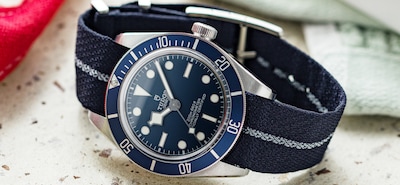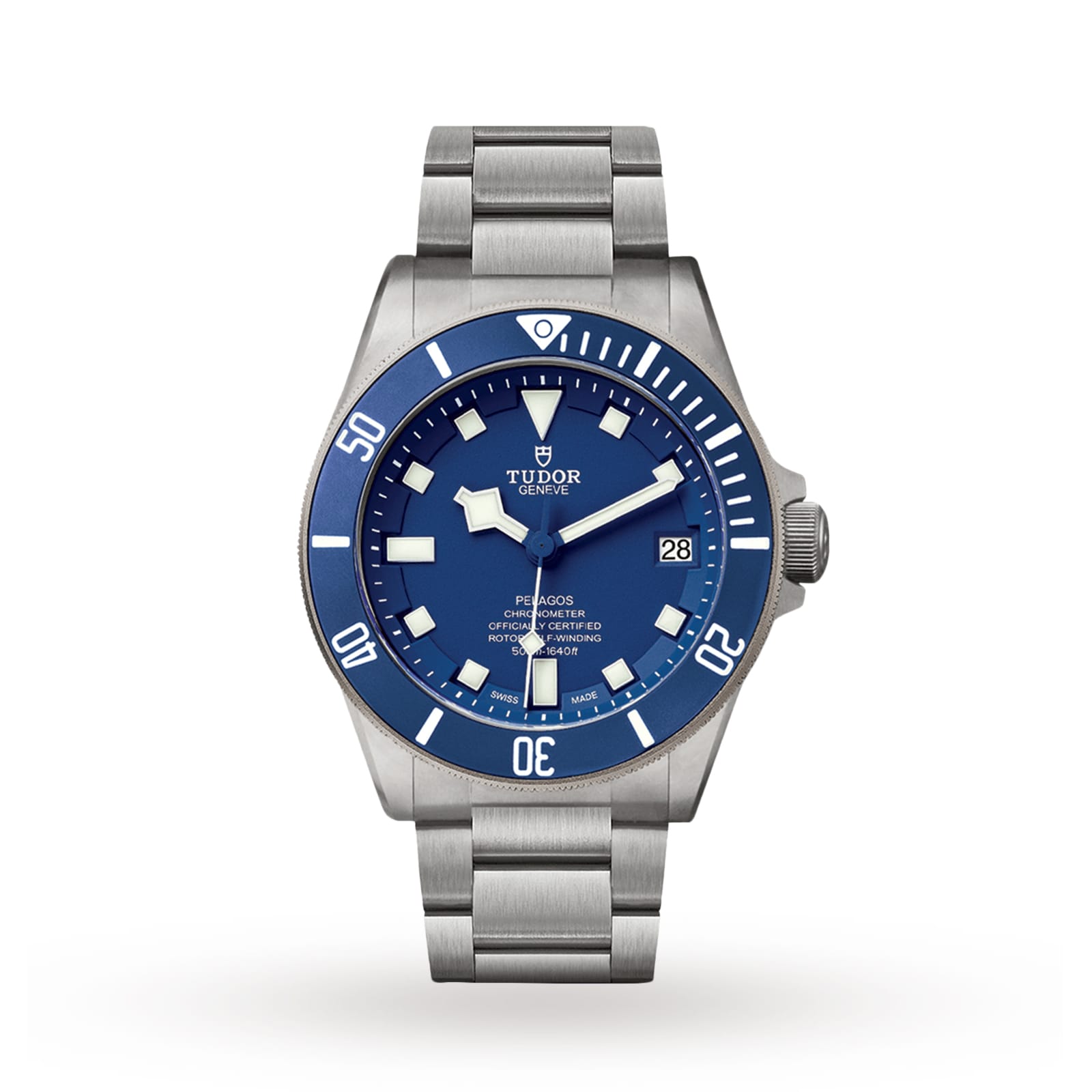The Iconic Design of the TUDOR Snowflake Hands
By Tracey Llewellyn | 4 minute read

The story of the Tudor ‘Snowflake’ stretches back six decades. One of the biggest years in watchmaking history, 1969, saw the launch of the world's first automatic chronographs, but for Tudor it was the year that the brand laid down what is possibly its most memorable blueprint, when it gave a facelift to its existing dive watch with a new and distinctive dial and hand design.
The first generation Tudor Oyster Prince Submariner ref. 7922 was released in 1954, one year after Tudor’s sister brand Rolex introduced its Submariner. While the Tudor had a different movement to the Rolex, the two models shared many design cues, from the case to the screw-down crown and black diving bezel. But, 15 years later, with the second-generation refs. 7016 (time-only) and 7021 (date), came Tudor’s new, hour and seconds hands with diamond-shaped tips to match the chunky, square hour markers.
By the time the new configuration was introduced, Tudor was already supplying France’s navy, the Marine nationale, with watches for its combat divers, and many believe that it was calls from the MN for improved legibility that led to the new design. The blocky diamond-shaped indexes enabled divers to quickly differentiate the hands from one another and also provided space for more luminous material to be applied, allowing for easier reading in the murky depths of the ocean.
The watches were quickly adopted by other military units including the Italian, US, and Canadian navies. Several years later in the 1990s, watches bearing the off-beat aesthetic were nicknamed ‘Snowflake’ Submariners by collectors who saw a resemblance to the six needles of an ice crystal and, in an unusual move for the House of Wilsdorf, Tudor officially adopted the moniker.
The first generation Tudor Oyster Prince Submariner ref. 7922 was released in 1954, one year after Tudor’s sister brand Rolex introduced its Submariner. While the Tudor had a different movement to the Rolex, the two models shared many design cues, from the case to the screw-down crown and black diving bezel. But, 15 years later, with the second-generation refs. 7016 (time-only) and 7021 (date), came Tudor’s new, hour and seconds hands with diamond-shaped tips to match the chunky, square hour markers.
By the time the new configuration was introduced, Tudor was already supplying France’s navy, the Marine nationale, with watches for its combat divers, and many believe that it was calls from the MN for improved legibility that led to the new design. The blocky diamond-shaped indexes enabled divers to quickly differentiate the hands from one another and also provided space for more luminous material to be applied, allowing for easier reading in the murky depths of the ocean.
The watches were quickly adopted by other military units including the Italian, US, and Canadian navies. Several years later in the 1990s, watches bearing the off-beat aesthetic were nicknamed ‘Snowflake’ Submariners by collectors who saw a resemblance to the six needles of an ice crystal and, in an unusual move for the House of Wilsdorf, Tudor officially adopted the moniker.

Unique to its diving watches, the Snowflake arrangement remained a staple of Tudor until the mid-1980s when it became less frequently used amongst its dive watches. But, in 2012, with one of the watch world’s most successful launches of all time, the layout was introduced with the debut of the Heritage Black Bay and Pelagos models. Today, a Tudor dive watch without Snowflake hands is almost unthinkable.
But the holy grail for any watch brand is to have an element that makes a watch instantly recognizable. Snowflake hands – once a functional upgrade – are today a signature of Tudor and an essential addition to all timepieces in its diving category.
Although Tudor Subs continued to be used by the MN until the early-2000s, the official relationship between the brand and the French navy ended in the 1980s. The connection, however, was never forgotten. The 2015 Pelagos Blue paid homage to the colour of the Submariners worn by the MN, while the Pelagos LHD introduced in 2016, and designed to be worn on the right wrist, was a nod to a watch created for the MN’s left-handed divers in the 1970s.
And in November 2021, the Snowflake story came full circle with the launch of the Pelagos FXD. A watch that the collector world had been waiting for, the FXD came with the announcement of a new partnership between Tudor and the French navy’s unit of combat swimmers, the Commando Hubert.
Unique to its diving watches, the Snowflake arrangement remained a staple of Tudor until the mid-1980s when it became less frequently used amongst its dive watches. But, in 2012, with one of the watch world’s most successful launches of all time, the layout was introduced with the debut of the Heritage Black Bay and Pelagos models. Today, a Tudor dive watch without Snowflake hands is almost unthinkable.
But the holy grail for any watch brand is to have an element that makes a watch instantly recognizable. Snowflake hands – once a functional upgrade – are today a signature of Tudor and an essential addition to all timepieces in its diving category.
Although Tudor Subs continued to be used by the MN until the early-2000s, the official relationship between the brand and the French navy ended in the 1980s. The connection, however, was never forgotten. The 2015 Pelagos Blue paid homage to the colour of the Submariners worn by the MN, while the Pelagos LHD introduced in 2016, and designed to be worn on the right wrist, was a nod to a watch created for the MN’s left-handed divers in the 1970s.
And in November 2021, the Snowflake story came full circle with the launch of the Pelagos FXD. A watch that the collector world had been waiting for, the FXD came with the announcement of a new partnership between Tudor and the French navy’s unit of combat swimmers, the Commando Hubert.
Discover more from TUDOR here at Watches of Switzerland.
Author Credit: Tracey Llewellyn has been a journalist for more than 20 years and has specialised in watches for at least half of that time. She is currently watch editor at the Telegraph.
Author Credit: Tracey Llewellyn has been a journalist for more than 20 years and has specialised in watches for at least half of that time. She is currently watch editor at the Telegraph.


